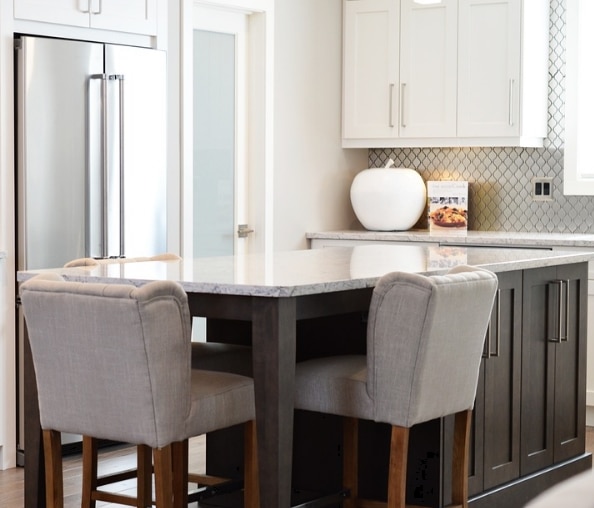Building a new home is an exciting endeavor with hundreds of decisions that need to be made. Did you know that outlet placement is one of them? While it may seem like a small detail, proper outlet placement will make life easier and smoother down the road for everyone.
If you’re wondering where plugs go in a new build, the answer is anywhere! Understanding your needs and how you will use your new space is the top priority when choosing the right place to place plugs. A professional electrician can assist you with drawing up an appropriate plan.
Let’s dive into some practical tips for choosing where to locate outlets.
1. Consider Room Functionality
In each room, think about where you will place beds, couches, chairs, desks and end tables. Where will you want to place lamps, small and large appliances, computers and televisions? Which appliances will need power in the bathroom and kitchen?
Analyze your daily habits to ensure that outlets are easy to access and convenient. If you have large pieces of furniture that will block outlets, remember they can be placed higher up on the wall if necessary. Aesthetics count as well.
While you don’t want outlets blocked and inaccessible by heavy furniture, homeowners generally prefer they are in inconspicuous areas and toward the corners of a room.
2. Follow Code Requirements
Adhere to local building codes and regulations regarding outlet placement. Regulations depend on several factors such as the type of building, the age of property, and the preferences of the electrical contractor.
They also may include the number of outlets required in each room and their proximity to certain areas. Know the safety code requirements for GFCI plugs in rooms where water is present, like kitchens and bathrooms.
3. Place Outlets at the Correct Height
Typically, outlets are installed about 12-18 inches above the floor, but higher placements may be appropriate for specific applications like for wall-mounted TVs and above the kitchen counters. In-floor outlets may also be an option in open-concept living rooms, for instance.
These allow you to plug in things like lamps in the middle of the room alongside a couch or chair. In-floor outlets can also be useful in home offices, particularly if you prefer not to have your desk against the wall.
4. Follow Spacing Requirements
Avoid overloading outlets by spacing them evenly around the room. Typical placement is every six to eight feet along the walls.
5. Use Specialized Outlets When Appropriate
GCFI outlets are required in areas prone to moisture, such as bathrooms, kitchens, and outdoor spaces. Outlets that include USB outlets may be useful in rooms where you want to charge electronic devices like phones without needing adapters.
6. Include Exterior and Garage Outlets
Outdoor outlets allow you to conveniently plug in things like holiday lights, landscaping tools or other outdoor appliances. Garages are frequently overlooked when it comes to electrical planning, but it can be an important area for plugging in power tools.
If you plan to have an automatic garage door opener, you will need to install outlets in the ceiling of the garage.
7. Ensure Outlets are Accessible to Everyone
Consider accessibility for all people in your household. For instance, higher placements may be needed for wheelchair users.
Learn more about the difference between GFCI and AFCI outlets: GFCI or AFCI: What Are They and Which One is Right for You
Shockley Electric Can Help With Plug Placement
At Shockley Electric, we address important home safety issues such as power surges, faulty electrical wiring, and potential fire hazards when we do electrical preventive maintenance in homes or commercial buildings. We are licensed, trained, and skilled in safety-proofing your home, and we are committed to the safety and well-being of our customers.
If you are experiencing electrical problems in your home or aren’t sure if your home is protected from electrical hazards, schedule an in-home estimate or appointment with us today. Fill out our form or call us now for a free estimate!

